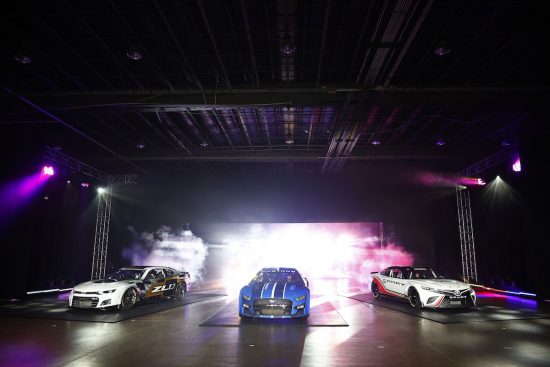
By Reid Spencer
NASCAR Wire Service
The curtain rose, the smoke billowed, and three NASCAR Cup Series Next Gen cars made a dramatic, roaring entrance onto the display floor at the unveil.
The first impression was obvious. When reigning Cup champion Chase Elliott drove the Chevrolet Camaro, Joey Logano the Ford Mustang and Denny Hamlin the Toyota Camry roughly 30 yards in the Wednesday afternoon unveiling of the much-anticipated Next Gen car, the most striking aspect was how much the new race cars resembled their production counterparts—and how easy it was to differentiate the new vehicles from one another.
“This is a significant moment for our sport,” NASCAR president Steve Phelps said during his introduction of the Next Gen cars. “This car is more relevant and includes more innovation than any car in NASCAR history. The styling of the car is clear. I mean, they look unbelievable. Just so incredible to finally be here.
“We really wanted to get back to a promise that we had made to the fans, which is to put the ‘stock’ back in ‘stock car.’ That was something extremely important to us and our fans. But just as important to our fans is the racing on the race track. It’s hard to believe that the racing could be any stronger than it is last year and the first 11 races this year, but this car has features that will make it even better.
“Simply put, this car will make our sport healthier and stronger. It’s an exciting day for our industry and our fans, and I’m proud of all the work that went into bringing us to today.”
Based on data gleaned from simulations and from limited testing of small numbers of Next Gen vehicles, NASCAR expects the new race car to be more challenging to drive and more exciting to race. As Elliott put it, it’s a clean slate for the best stock car drivers in the world.
“I’m excited about the product that we came up with and a lot of collaboration with all of our key partners at Chevrolet within the NASCAR teams to have a product that looks as good as it does and is much like the car and the Camaro you can go buy at your Chevrolet dealership, too,” Elliott said. “Excited about that.
“Selfishly, as a driver, I’m excited about the challenge. I think it’s going to be tough. There’s going to be things with this car I haven’t seen as a race car driver yet. Until you get on track and work through it, it’s going to be tough. I’m looking forward to all the things that come with that, trying to reinvent yourself as a driver to see what you have to do to be good.”
Fans in attendance at the unveiling were greeted with a race car that exhibits a lower roof line; a longer, sleeker hood area; a smaller, racier rear deck lid area; and more effectively protected wheels that feature a single central lug instead of the five lug studs currently in use.
Hidden from view are additional features that bring the Next Gen car closer to modern production vehicles.
“The car itself, first of all as an engineer, racer, I love everything underneath it which you can’t see today,” said Mark Rushbrook, global director of Ford Performance Motorsports. “The new architecture moving it forward, making it more modern—the independent rear suspension, the (rack-and-pinion) steering system, the driveline, the opportunity for power train advancements as our world changes for future power trains–that’s all built into this. We’re really excited about that.
“The biggest thing is what you can see today and what the fans will see on the track. As a racing fan, I can’t wait to see 40 of these out on track. It’s the body, what we are able to do by coming up with new proportions for it. This screams ‘Mustang’ to me, just the proportions of the car. With the low roof, the long hood, the short deck—those are Mustang proportions. That jumps out immediately.”
The debut of the Next Gen car was originally slated for 2021 but was delayed for a year because of the coronavirus pandemic. Even though the car won’t race competitively until Speedweeks at Daytona in February 2022, it already has had an impact on attracting new ownership to NASCAR’s premier series.
“I think you’ve heard it from the likes of Michael Jordan, Denny Hamlin with 23XI Racing,” Phelps said. “We’ve heard it from Trackhouse Racing from Justin Marks and Pitbull, and from Live Fast Racing with Matt Tifft and B.J. McLeod. There’s an eagerness for ownership to come to this sport. I think this car and the importance of this car, what it represents, is at the heart of what that would be.”
Hamlin affirmed Phelps’ assertion, noting that the prospect of simultaneous development of the Next Gen car by definition fosters parity between organizations.
“It’s an attractive time to come into the sport, obviously,” said Hamlin, a who partnered with Jordan this year to field cars for Bubba Wallace. “This was a big factor in our decisions, will be part of our decisions going forward.
“We have a reset in technology and resources that are going to be going into this car. We’re not at a 20-to-30-year disadvantage by coming into the sport. We’ll all be developing it at the same time in its early existence.”
The Next Gen car, however, is not yet a fait accompli. There’s testing to be done with large numbers of cars on the track, with an eye toward analyzing the aerodynamic aspects of multiple cars racing together. There are decisions still to be made about such vital racing aspects as horsepower and spoiler size.
“We have tests coming up in August (that) will be the first time that we’ll look at Daytona with multiple cars on the track,” said Steve O’Donnell, NASCAR executive vice president and chief racing development officer. “And then as you fast-forward towards the end of the season—October, I believe—we’ll have both the (Charlotte) Roval and the oval with multiple cars on the track from each of the race teams.
“And then following that up post-Phoenix (in November), we’ll dial that in with the race teams as well, with a number of cars out on the track. Don’t have anything concrete yet for Daytona around that January time frame, but those will be what will be in place towards the end of this year, with multiple cars out there.”

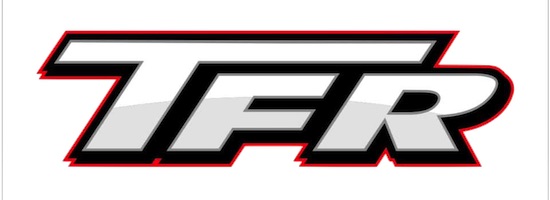




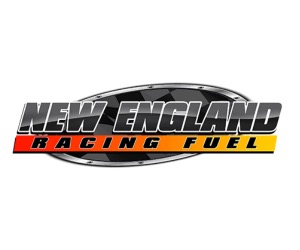


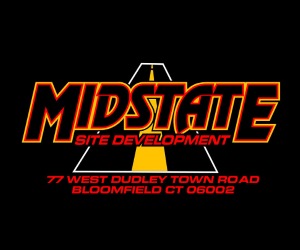

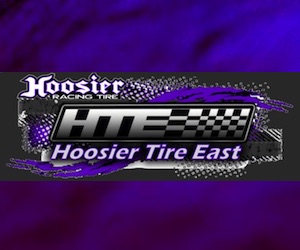

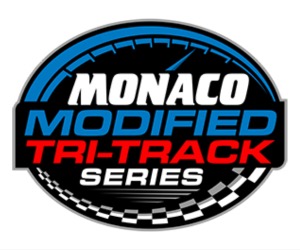



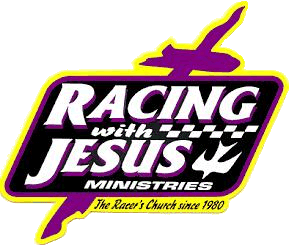

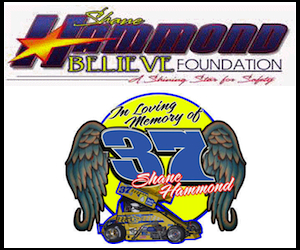

Independent rear suspensions – That really caught my eye >> Truck Arm 66 Chevelle 68 all these years .. WOW
those independent rears cannot take a beating like the old stuff. That will be interesting to see what happens after side contact with another car or a bounce off the outside wall … My Corvette Didn’t care for any kind of rough treatment with independent suspension . WE shall see.. What the set up is.. Better be pretty BEEFY… The single lug should cut pit stop times down a bunch for four fresh sneakers too…. Very Interesting my Sons ….
Also has a wider tire.
Going back to dual exhaust, that is, both sides of the car.
The independent rear suspension will be fun to watch play out.
But the cars will effectively be SPEC cars, with parts, chassis, bodies, etc. made by select companies.
Hold my beer.
What could go wrong?
I hope it works out, but technology-wise it sounds like NASCAR is going SCCA/ISMA racing to me. BUT… if new fans become interested that’s always a good thing. It’ll be interesting to see what NASCAR engineers and mechanics do with the new technology; I’m sure they’ll come up with some “go fast” things the sports car world hasn’t thought of.
Some others things… the hood vents are functional, the cooling air from the radiator passes through these hood vents. Engine breathing air now comes from the front grille.
The IRS includes a transaxle. Now a 5-speed. The IRS should make for less complicated chassis tuning.
IRS had to happen since even trucks are going that way. Keeping the wheels aligned will be a challenge.
All standard off-the-shelf parts. We are looking at IROC or SPEC racing.
Rear transaxle is a derivative of the Aussie V8 supercar spec Xtrac unit which has been used since 2019. It has a positive pressure oil system, adjustable preload differential, and drop gear set for overall drive ratio changes. It will be considerably more durable and less expensive to use when compared to current combinations of 9″ center section rears and t10 or top loader derived transmission architecture. It was required to move the transmission gear set aft in the cars to make space between engine flywheel and transmission for future hybrid propulsion units. Ford management made it clear to NASCAR when they exited IMSA at end of GT program that they would not return as a corporation to IMSA and would exit Cup series unless future series plans included Hybrid power technology. An IRS is forced since the transaxle must be fixed mounted to chassis. IRS design is SLA type rather than a multi link design which would be similar to something in a current road vehicle. It will be much easier to deal with the new IRS than the assortment of weldments and strut rods to maintain toe and camber on the current 9″ beam axles.
The single lug wheels serve multiple purposes. One was to get away from the the loose lug issues many teams deal with and get fined for (the single lug has a positive locking feature). Another was the amount teams were spending in pit crew training and salaries. Also wheel induced vibration complaints have been an issue for years, so Nascar wanted to get away from the uniformity issues of lug centric high runout steel wheels and go to hub centric wheels with bead flanges machined relative to hub center to reduce runout. The larger diameter wheels were at the request of tire and brake suppliers, as well as Nascar desire to reduce the cut tire incident from contact by reducing sidewall height.
NASCAR consulted heavily with sports car series and engineering teams for input and development. Action Xpress (IMSA DP team with several CT ties) provided resources to build and develop prototypes. The V8 Supercar series was integral in providing a spec template, providing information for such things as how to avoid the 100s of thousands their teams were spending to develop front uprights. As far as what will Nascar engineers do that is different than the sports car world, many of these engineers are crossovers. Penske Nascar, Indycar, and coming sports car operations are part of same complex and share technical resources. Penske participated in the V8 Supercar series for a few years to gain experience. Pratt Miller (Corvette racing) had been GM’s technical support for their Nascar programs until this year. It is no industry secret that Andretti Autosport will expand to Cup series if an acceptable manufacturer agreement is made. The concern isn’t what will Nascar engineers do with the new cars as much as what will happen when new technology filters down to the short track world as it eventually will.
As a big road racing fan, these remind me a lot of TransAm’s top class, although TA still runs a straight rear end.
Current independent racing rears are pretty durable. They tend to stand up to incidental wall contact, or many repeats over rumble strips pretty well.
Great informational post, Dr. Neville! Thanks for sharing a ton of great info.
Google NASCAR Next Gen… there’s tons more info out there.
Cup racing is going SPEC racing. You’ll see.
The chassis are inventoried by NASCAR. The teams issue a purchase order to the manufacturer and when that is confirmed, NASCAR will release a chassis to the team issuing the purchaser order. NASCAR has inserted itself as a middleman.
I saw a few pictures of the cars. I think they look good especially the Mustang and Camaro. I thought Toyota was going to the Supra, dont they run that in the xfinity series. I would love to see Dodge come back into the series with the charger. The early test sessions showed the new gen was great on the road courses and needed some work on the oval. I saw some speculation they will be running a street course in Chicago with these new cars. It cant hurt. The popularity of Nascar and ratings havent been trending in the right direction. Honestly looking forward to all the changes. I applaud them for trying something different.
Sure would like to see a Dodge Challenger in the mix.
Dareal, completely agree. A good time for Mopar to get involved again with everyone starting from the beginning with these new cars.
Is there a doctor in the house? You betcha and his prescription for more detailed information a terrific jumping off point that the fluff piece from NASCAR could not do at this point.
Not a done deal they say and rightfully so. The Royal families of NASCAR cut can well afford the monster changes but down the line the money gets thinner and the cost more crippling.
Love the transaxle. Debate is over on electric cars, they are the future and this component is a critical part that technology that is already advancing at light speed.
The other interesting spec is that the cars are riding higher with suspension travel limiters, so the cars can not get below a certain amount. That will be important and require drivers to do more driving.
When the cars switch to battery power, the gas man becomes the battery man, and they will do battery sled swaps. Cars will have to be designed to do quick change battery swaps.
Fast Eddie, I thought a Challenger would be awesome, but the distinct lines of the Challenger nose don’t seem to work with the nice areo noses of the Camaro, Mustang and Camry. For that reason, I would have to say a Charger would be have to be the way to go, even though the Charger of today is not a descendent of the original Charger lineage.
IF I can’t feel or hear THE ROAR OF THE ENGINES & SMELL THE RACING FUEL that is where I quietly step off the TRAIN that is NASCAR… RETIRE back to the BULLRINGS that still run V-8’S …. I have heard plenty of ELECTRIC MOTORS and none of them GOT MY ATTENTION LIKE 40 V-8’S Screaming down to the green flag…
I tend to agree. I have watched a lot of racing online and while the coverage is great you do miss a lot of the experience. The sounds, the smells, the people are all lost when watching on the tv. While the benefits of watching online are numerous you do lose a lot not being there in person.
Suitcase, Ford has made it clear that the Next Gen car had better be ready to go hybrid or electric… soon, or they will leave NASCAR. That was the reasoning for the transaxle, to get the car ready for electric power.
And pedestrians are getting hit by electric cars at a higher rate because the cars are so quiet and pedestrians can’t hear them. Thought is to give the electric cars fake noise from speakers so pedestrians can hear them. 🤷♂️
Agree with csg… watching a race on TV at home and being at the track are entirely different. Being at the track is an experience. The aromas of racing gas and gear oil, the fulls sounds that can’t be reproduced at home. Nothing like it.
Dareal, yes the Charger has the more aerodynamic nose than the Challenger would. To keep the proper look, the Challenger recessed grille kills the aerodynamics.
I’ve watched the Formula E from time to time, but it just doesn’t have the same appeal to me as Formula 1 does, part of which is due to the cars themselves. I think electric car technology still has a long way to go for it to be a viable racing product.
If Dodge/FCA/PSA now Stellantis participated in NASCAR Cup racing they could come up with a Fiat or Peugeot race version if they had to. Those days are gone and for now we’re lucky to have Ford, GM and Toyota.